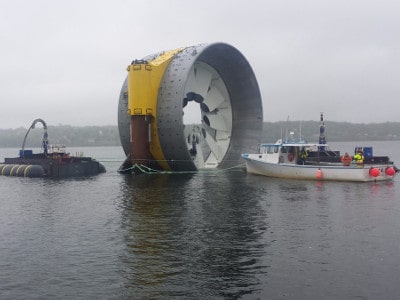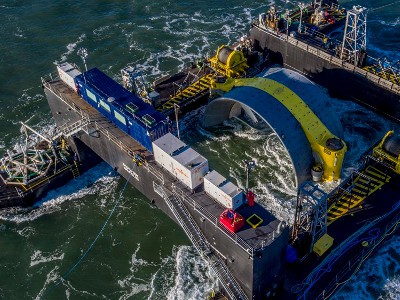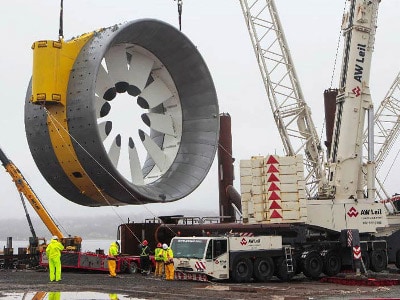
 Nova Scotia’s Department of Environment has approved the proposed monitoring program for the Fundy Ocean Research Centre for Energy (FORCE) and Cape Sharp Tidal Venture, which involves the deployment of two 16-metre, 1,000 tonne turbines in Nova Scotia’s Minas Passage.
Nova Scotia’s Department of Environment has approved the proposed monitoring program for the Fundy Ocean Research Centre for Energy (FORCE) and Cape Sharp Tidal Venture, which involves the deployment of two 16-metre, 1,000 tonne turbines in Nova Scotia’s Minas Passage.
When the turbines are connected to the power grid, they promise to generate enough electricity to power 1,000 homes, providing approximately 2,500 MW of electricity, driven by the more than 160 billion tonnes of water that flows through the Basin twice a day, which is more than four times the combined flow of every freshwater river in the world.
“We are satisfied that the proposed plan, together with the monitoring and study improvements as we have directed, will help address information gaps and improve our understanding of the interaction between the two turbines and marine life in this unique environment,” said Environment Minister Margaret Miller. “If we are to advance our collective knowledge of the turbines’ impact on our fish and marine mammals, demonstration turbines need to be in the water.”
The Fundy Ocean Research Centre for Energy originally registered its proposed Fundy Tidal Energy Demonstration Project for environmental assessment to the Nova Scotia government in July 2009, in accordance with Part IV of the Environment Act.
Provincial Department of Environment staff reviewed the Environmental Effects Monitoring Plan and consulted with Fisheries and Oceans Canada, before approving the program earlier today.
A report prepared for Fisheries and Oceans Canada by the Center for Science Advice (CSA) in the Maritimes Region is inconclusive, saying, “Baseline monitoring outlined in the FORCE baseline report (2011-2013) is considered insufficient to provide a thorough baseline understanding of the marine environment of the Minas Passage, as well as the FORCE demonstration site.”
Before any more turbines, in addition of the two being deployed for monitoring purposes, can be installed, the monitoring program must be accepted by Fisheries and Oceans Canada and the Department of Environment.
Shortly after the announcement of the deployment of the two initial turbines by the end of June, the Bay of Fundy Inshore Fishermen’s Association has voiced opposition, and since been met by provincial MPs, with a promise of a future meeting with the federal Fisheries and Oceans minister.
Retired Acadia University professor Mike Dadswell has also spoken up, telling the Halifax Chronicle-Herald, “It’s a known fish-killer,” adding, “There is a heck of a lot more happening in Minas Passage than FORCE (Fundy Ocean Research Centre for Energy) has any idea of based on what their few and poorly executed fish surveys would indicate.”
He’s referring to several reports relating to the project, including one by the Offshore Energy Research Association (OERA) whose report summarizes tidal-energy related research undertaken in the Bay of Fundy since 2007.
“The tidal energy sector has numerous opportunities for both clean energy and ocean sector economic activity,” says OERA Executive Director Stephen Dempsey. “We’re committed to ensuring the industry moves forward in an environmentally responsible and sustainable way. Over the past decade, the OERA has invested over $5M and funded more than 50 research projects in tidal energy alone.”
A year ago, FORCE deployed two underwater monitoring platforms to facilitate real-time data collection from the Minas Passage, measuring currents and turbulence, marine life activity, noise level, and seabed stability.
Leave a Reply
You must be logged in to post a comment.





 Share
Share Tweet
Tweet Share
Share




Comment